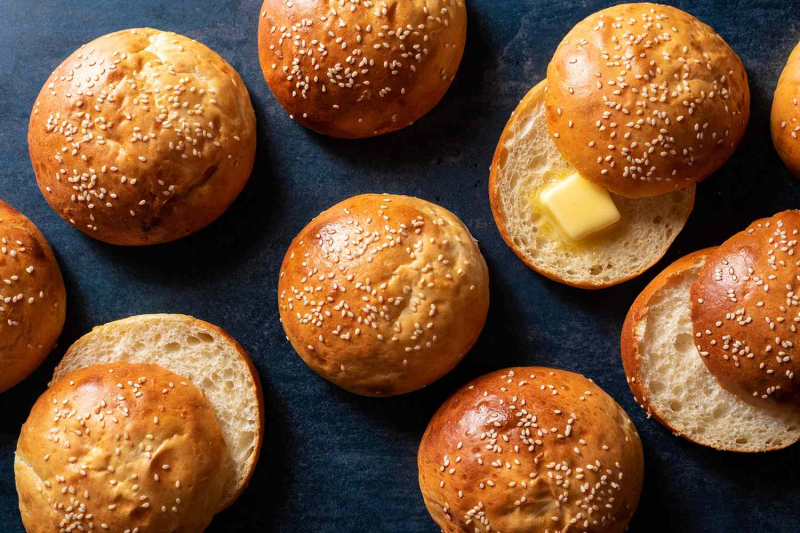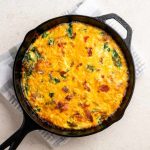The perfect cross between a potato roll and brioche for sandwiches and more
Prep: 25 mins
Cook: 15 mins
Proof: 3 hrs 30 mins
Total: 4 hrs 10 mins
Servings: 9
Yield: 9 buns
Brioche buns are rich by definition (they literally fall under “rich” doughs) with a soft, fluffy structure. Whereas standard breads can be made from nothing more than water, flour, salt and yeast, brioche buns are made with a high ratio of eggs, milk, and butter. The higher fat and protein contents is what makes this bread so special.
Similar to a potato bun they are slightly sweet, but not too soft that they get soggy quick or fall apart. This particular recipe is the perfect cross between the two breads, making it my perfect sandwich option. It’s chewy enough to give your favorite sando structure, but doesn’t make you fight against each bite like most brioche buns can do.
Since the fats remain in place after baking (they cool down and solidify again), they will remain around these air bubbles. That helps in keeping the bread fresh, it serves as a protective layer.
What is The Tangzhong Method
The most exciting part of this recipe is a longstanding Asian technique called Tangzhong where you cook a small portion of the flour and liquid (milk, here) in yeast breads before combining it with the remaining ingredients. It has origins in Japan's Yukone (or Yudane).
Scientifically speaking, this pregelatinizes the starch in the flour, so it is able to absorb more water—flour absorbs twice as much hot liquid than lukewarm/cold. This makes all the other recipe steps even simpler. The dough will be less sticky and easier knead. The dough will rise higher because there is more liquid to create steam. And, the buns will be softer and stay fresher longer due to the moisture content. This technique will elevate everything from dinner rolls, sandwich bread, cinnamon rolls, and more.

“These buns were fantastic—light and fluffy, yet sturdy enough to withstand plenty of fillings. A digital scale will be your best friend for this recipe to ensure that you can accurately weigh out your ingredients and individual dough portions.” — Julia Hartbeck
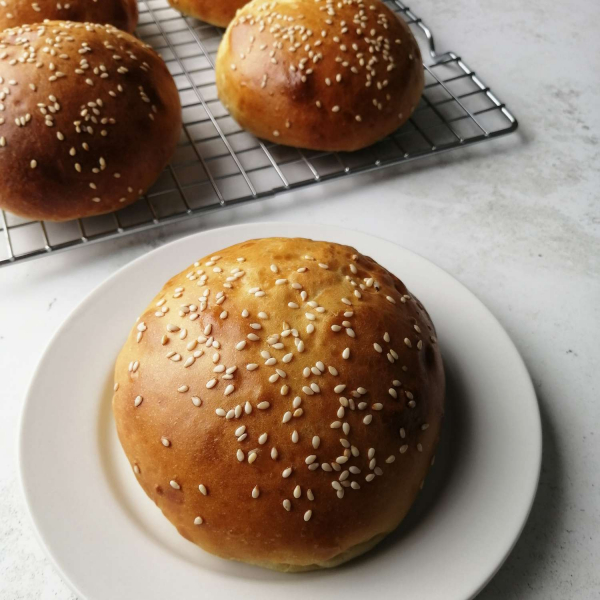
A Note From Our Recipe Tester
Ingredients
Tangzhong
-
215 grams whole milk
-
35 grams bread flour
Dough
-
215 grams cold whole milk
-
1 packet (2 1/4 teaspoons) active dry yeast
-
25 grams sugar
-
40 grams milk powder
-
1 large egg, room temperature
-
2 teaspoons kosher salt
-
370 grams bread flour
-
55 grams cubed unsalted butter, room temperature, more for serving
Egg Wash
-
1 large egg
-
1 tablespoon whole milk
-
Sesame seeds, for finishing
Steps to Make It
-
Gather the ingredients. Line two baking sheets with parchment paper.
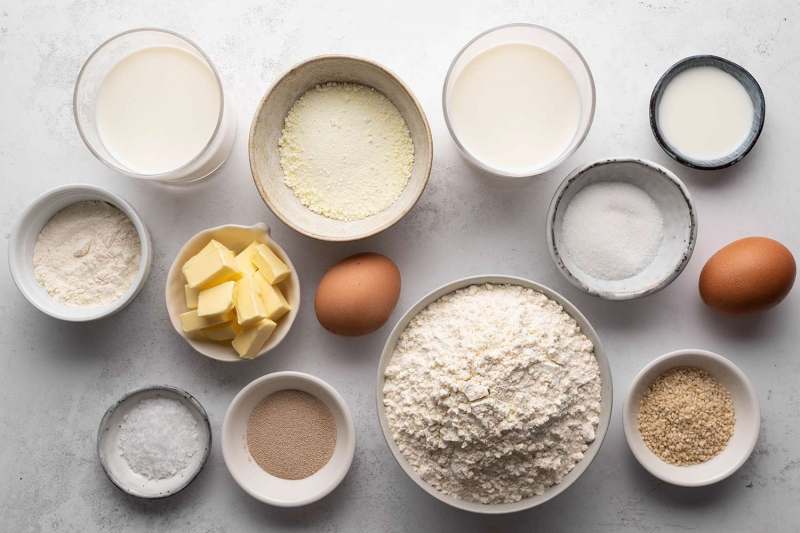
-
To make the tangzhong, combine the milk and flour in a medium saucepan. Cook over medium heat, stirring constantly, until the mixture thickens into a paste, about 1 minute.
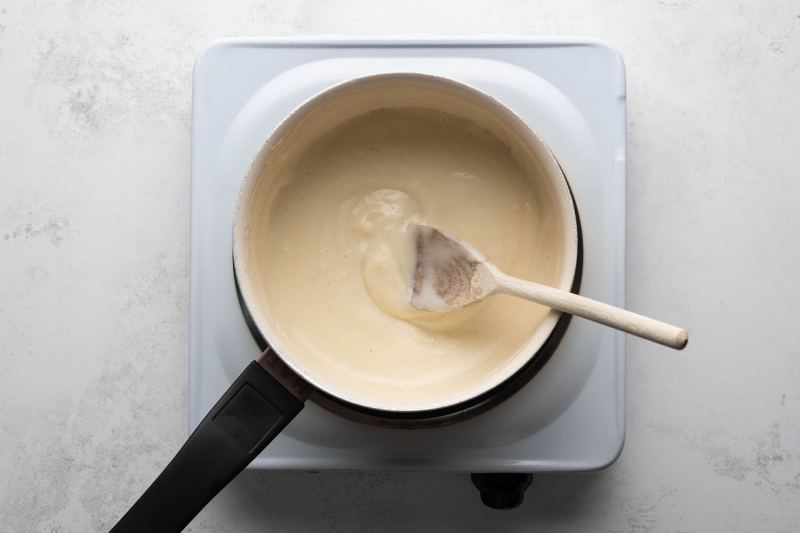
-
Transfer the tangzhong to the bowl of an electric stand mixer, then add the cold milk and mix with a spatula to combine (this will help cool the mixture slightly before adding the remaining ingredients).
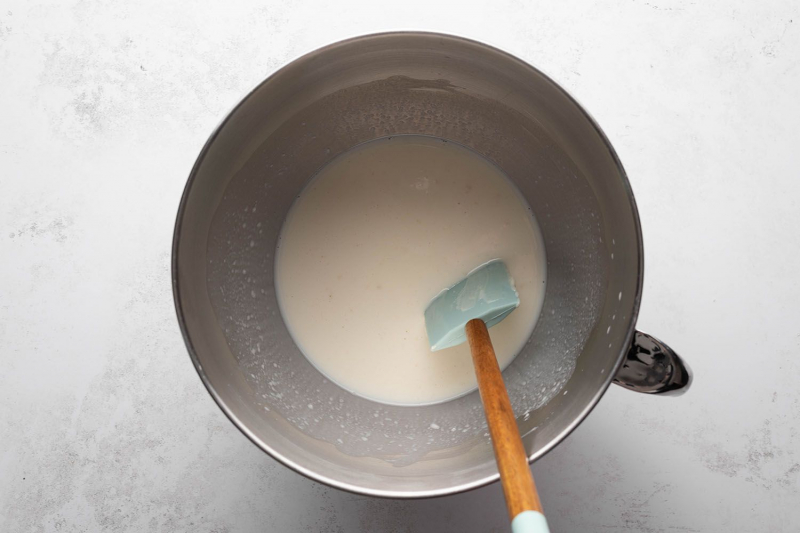
-
Add the yeast, sugar, milk powder, egg, salt, and flour to the mixture. With the hook attachment, mix the dough on medium speed until it is smooth, elastic, and pulling away from the sides of the bowl, about 10 minutes.
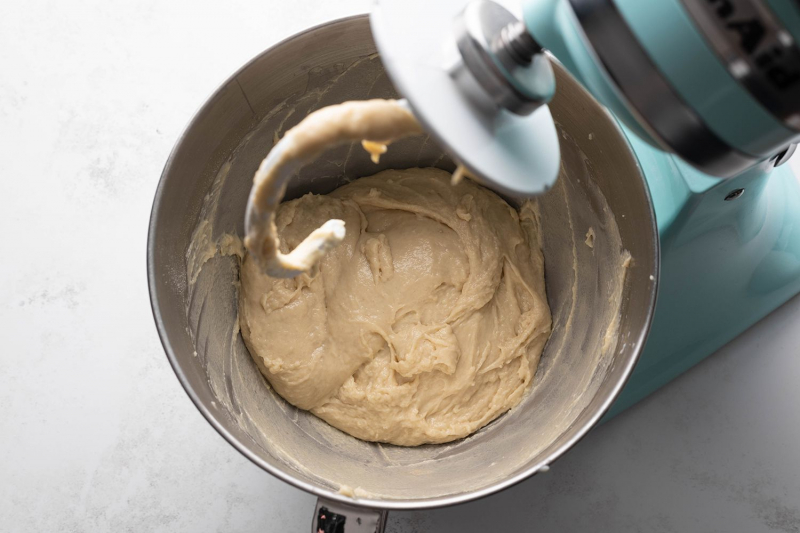
-
Add the butter to the bowl and mix until fully incorporated, about 8 minutes.
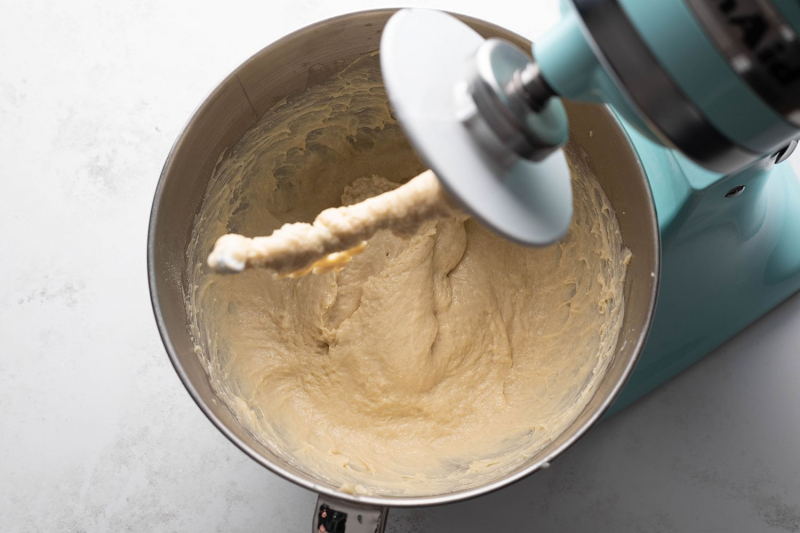
-
Very lightly flour a work surface, then turn the dough out onto it. Use a bench scraper to bring the dough into a tight ball. Transfer to a greased bowl, then cover with plastic wrap. Place in a warm spot to proof until doubled in size, about 2 hours.
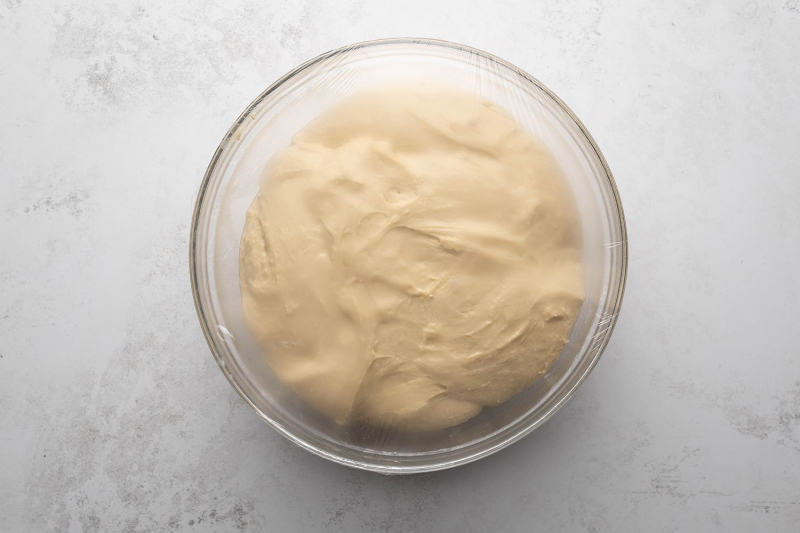
-
Turn the dough out onto a lightly floured work surface. Divide the dough into 9 portions, about 90 grams each. Working with one ball of dough at a time, flatten out the dough, then pull in the corners of the dough to make a ball. Turn the ball seam-side down and roll tight, using the tension from the counter to roll tightly. (Avoid over flouring the surface because it makes shaping difficult and if too much flour is incorporated into the dough it will make the buns dry.)
Set the buns aside on the counter and cover lightly with plastic wrap. Repeat with the remaining pieces of dough, keeping about an inch of space between each.

-
Let the buns rest for about 10 minutes to let the dough relax, then give them a final roll to tighten back up. Place on the the prepared baking sheets, leaving space between (do not place more than 5 on a baking sheet).
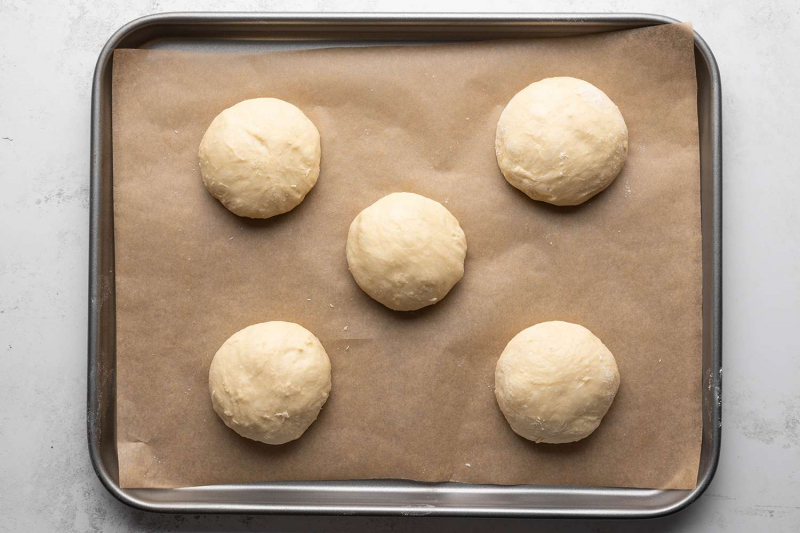
-
Cover the buns with some lightly greased plastic wrap. Leave the buns to rise again until puffy and doubled in size, about 1 1/2 hours. When there is about 10 minutes left, position two racks in the upper and lower third of the oven and heat to 375 F.

-
To make the egg wash, whisk together the egg and milk. Gently, brush the buns all over with the egg wash. Sprinkle all over with sesame seeds.
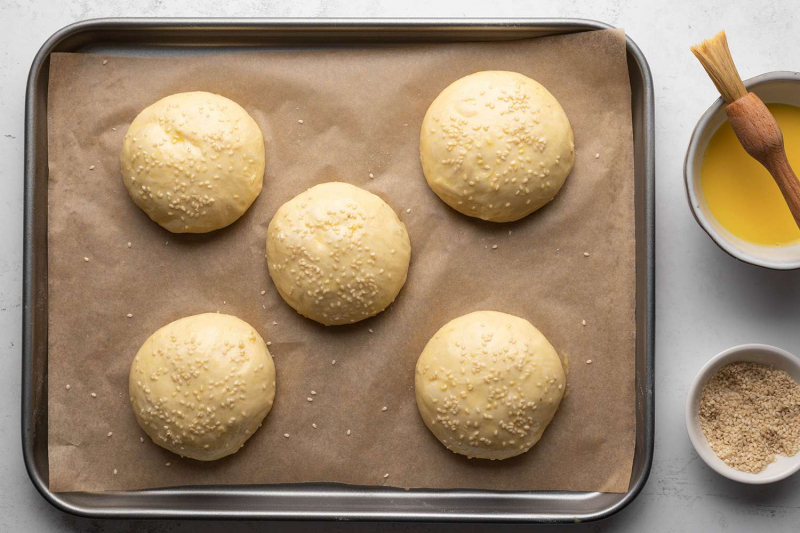
-
Bake until deep golden brown, flipping the pans in the oven half way through baking, about 15 minutes total.
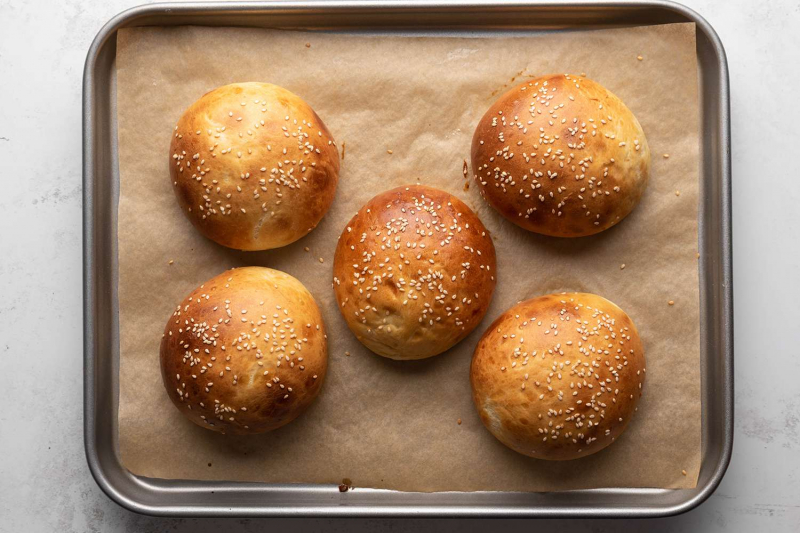
-
Let cool on the baking sheets for 10 minutes, then transfer to a wire rack. Slice and served with butter or make your favorite sandwich.
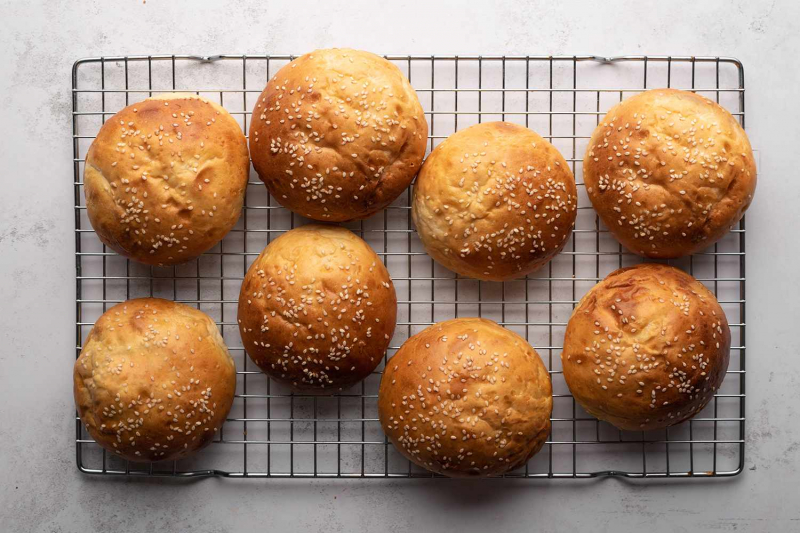
Storage
- Store the fully baked buns in a resealable bag or airtight container for up to 5 days.
- You can freeze the portions and shaped dough on a parchment-lined baking sheet, then transfer to a resealable bag or airtight container once firm to the touch. Store for up to 2 months. Note, the second proofing will be longer.
- You can freeze the fully baked buns in a resealable bag or airtight container for up to 2 months. Defrost in the fridge, then reheat in a 300 F oven or microwave.
| Nutrition Facts | |
|---|---|
| Servings: 9 | |
| Amount per serving | |
| Calories | 294 |
| % Daily Value* | |
| Total Fat 9g | 12% |
| Saturated Fat 4g | 22% |
| Cholesterol 59mg | 20% |
| Sodium 621mg | 27% |
| Total Carbohydrate 41g | 15% |
| Dietary Fiber 2g | 6% |
| Total Sugars 8g | |
| Protein 11g | |
| Vitamin C 0mg | 2% |
| Calcium 158mg | 12% |
| Iron 1mg | 6% |
| Potassium 229mg | 5% |
| *The % Daily Value (DV) tells you how much a nutrient in a food serving contributes to a daily diet. 2,000 calories a day is used for general nutrition advice. | |
